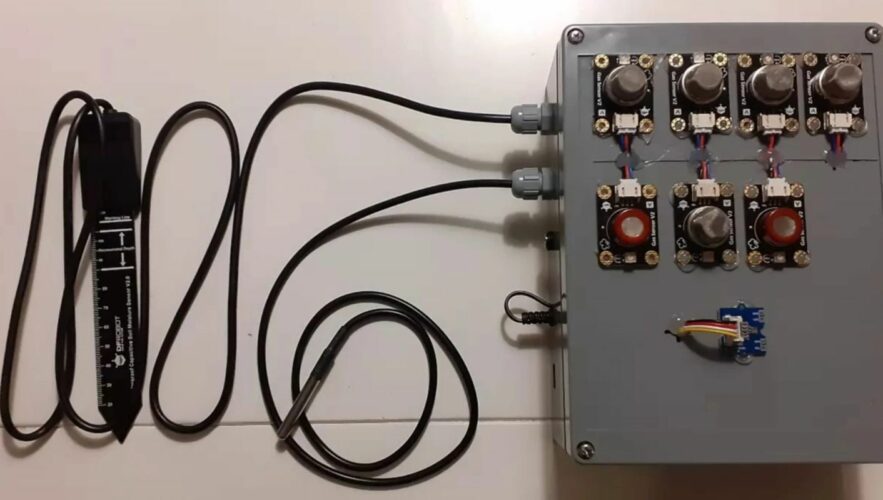Researchers at Campus Gandia (UPV) have developed a groundbreaking sensor system that can capture the unique fingerprint of essential oils, identify their origin, and detect any adulteration. Currently, they have applied this system to the oils of a forest crop, specifically sticky rockrose, though it has potential applications for other products as well. Their research project has been published in the journals Sustainability and Sensors.

The research group, led by Jaime Lloret and formed by Sandra Sendra, José Miguel Jiménez, Lorena Parra, Sandra Viciano, Ali Ahmad and Francisco Javier Díaz aims to assess the maturity of forest crops using sensor technology.
Sticky rockrose yields a range of high-value biomaterials, the quantity and quality of which are influenced by environmental conditions. “Our goal was to utilize inexpensive sensors to detect the maturity state of plants based on the gases and volatile organic compounds they emit in their natural environment,” Jaime Lloret elaborates.
By employing seven gas sensors, each tailored to measure distinct types of gases, and integrating their readings with artificial intelligence, the system crafted by this team can effectively discern various volatile organic compounds. “After compiling a database using these sensors and applying artificial intelligence, we train the system to classify or differentiate odors,” adds Sandra Sendra.
The initial application of this system was to distinguish between rockrose oils and pine oil, as well as to identify rockrose oil adulterated with pine oil. In their latest research, the team has successfully distinguished sticky rockrose essential oils of varying quality.

Cost-effective and User-Friendly
The primary strengths of this system lie in its affordability and user-friendly design. Presently, distinguishing between various oil types and quantifying the chemical compounds within them typically involves intricate chemical analyses, necessitating specialized personnel and high-maintenance equipment. “These analyses are typically conducted by specialized companies and laboratories, which can pose a significant expense for companies seeking to understand the characteristics of the oils they work with,” emphasizes Jaime Lloret.
Upcoming Actions
The research team is currently focused on detecting and quantifying specific molecules, such as alpha-pinene, which is the primary compound in the terpene hydrocarbons group.
“To achieve this, we plan to combine sensor usage with multiple samples, each with known concentrations of chemical compounds, to establish a comprehensive database,” explains Jaime Lloret. “This data will be processed using more advanced artificial intelligence techniques than those previously employed,” adds Lorena Parra.
For the development and validation of this system, the UPV team collaborated with the Madrid Institute of Rural, Agrarian and Food Research and Development (IMIDRA) and the Renewable Energy Development Center – Energy, Environment, and Technological Research Center (CEDER-CIEMAT).
References
Viciano-Tudela, S., Sendra, S., Parra, L., Jiménez, J. M., & Lloret, J. (2023). “Proposal of a Gas Sensor-Based Device for Detecting Adulteration in Essential Oil of Cistus ladanifer”. Sustainability, 15(4), 3357.
Viciano-Tudela, S., Parra, L., Navarro-García, P., Sendra, S., & Lloret, J. (2023). “Proposal of a New System for Essential Oil Classification Based on Low-Cost Gas Sensor and Machine Learning Techniques”. Sensors, 23(13), 5812.

